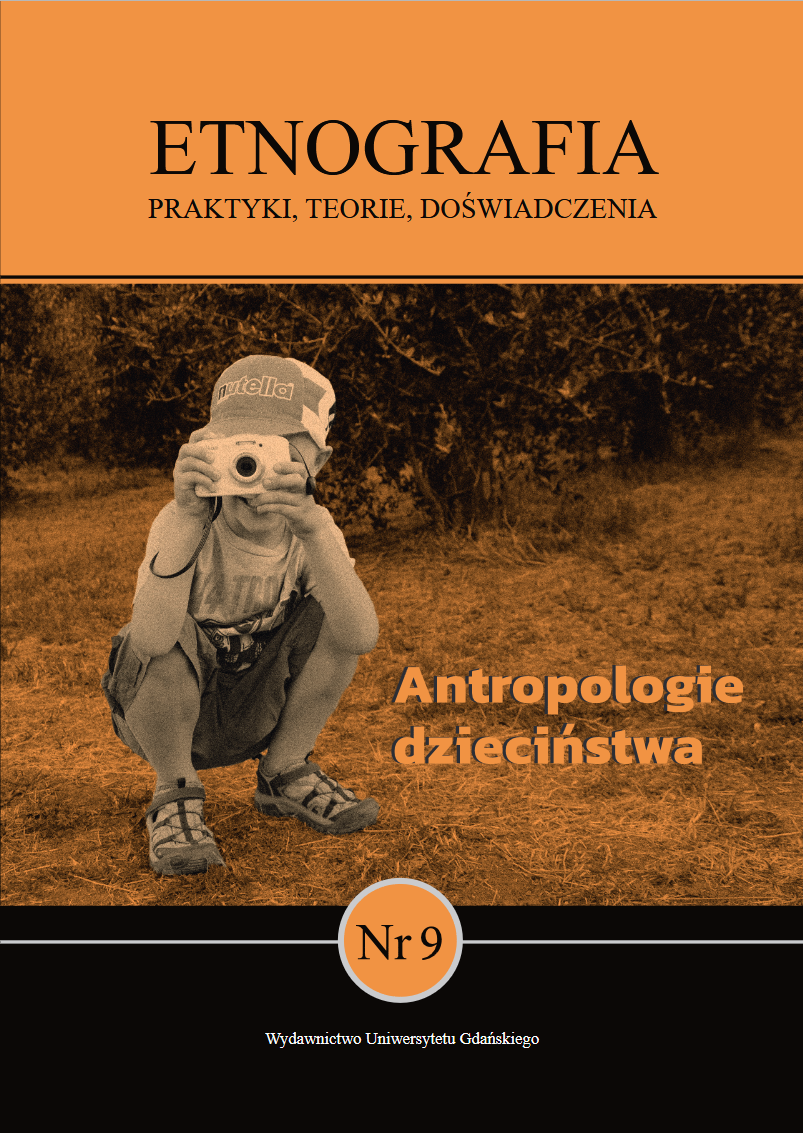Czy dzieci mogą bawić się zabawkową bronią? Analiza dyskursu w internecie
DOI:
https://doi.org/10.26881/etno.2023.9.10Słowa kluczowe:
toy guns, war play, vulnerable child, discourse analysisAbstrakt
The article presents how the discourse around toys imitating weapons is shaping in relation to contemporary visions of childhood. It is based on conclusions drawn from my own research on Internet discourse based on Polish-language websites. The work presents various visions of childhood, with particular emphasis on the concept of the vulnerable child and issues related to toy weapons from a sociological perspective. The main part of the work presents the methodology, the course of the study and its results. The author presents four positions representing different approaches to toy weapons and the possibilities of children playing war, and also indicates the main arguments used by representatives of the specified positions. Moreover, the author analyzes the co-occurrence of codes that emerged during the study. The analysis of the collected results indicates that the concept of a fragile child is not the only vision of childhood in Poland. There is a large group of adults who claim that children have the right to know about war, weapons and the problem of violence, and that playing with weapons is a natural part of development and builds boys' identity.
Downloads
Bibliografia
Allegro.pl (2014). Czy wypada kupić dziecku pistolet? www.allegro.pl/artykul/czy-wypada-kupic-dziecku-pistolet-42281 [dostęp: 1.06.2020].
Ariès, P. (1995). Historia dzieciństwa: dziecko i rodzina w dawnych czasach. Gdańsk: Wydawnictwo Marabut.
Birkeland, A., Grindheim, L.T. (2021). Exploring military artefacts in early childhood education: Conflicting perspectives on cultural sustainability, belonging and protection. Sustainability, 13. https://doi.org/10.3390/su13052587.
Buettner, C. (1981). War toys or the organization of hostility. International Journal of Early Childhood, 13(1), 104–112.
Connor, K. (1989). Aggression: Is it in the eye of the beholder? Play and Culture, 2, 213–217.
Cross, G. (2011). Playing at war: Modern historical trends and debates. W: D.T. Cook, J. Wall (red.), Children and armed conflict (s. 213–217). Palgrave Macmillan.
Fakt.pl (2011). Nie kupuj dziecku broni. www.fakt.pl/wydarzenia/polska/nie-kupuj-dziecku-broni/9bxz2qm [dostęp: 1.06.2020].
Furedi, F. (2002). Paranoid parenting: Why ignoring the experts may be best for your child. Chicago: Chicago Review Press.
Gdula, M. (2009). Trzy dyskursy miłosne. Warszawa: Oficyna Naukowa.
Holland, P. (2000). Take the toys from the boys? An examination of the genesis of policy and the appropriateness of adult perspectives in the area of war, weapon and superhero play. Children’s Social and Economic Education, 4(2).
Kobieta.interia.pl (2018). Czy dziecko może bawić się bronią? www.kobieta.interia.pl/dziecko/news-czy-dziecko-moze-bawic-sie-bronia,nId,2558665 [dostęp: 1.06.2020].
Łaciak, B. (2003). Dziecko we współczesnej kulturze medialnej. Warszawa: Instytut Spraw Publicznych.
Maciejewska-Mroczek, E. (2012). Mrówcza zabawa: Współczesne zabawki a społeczne konstruowanie dziecka. Kraków: Universitas.
MamaDu.pl (2014). Zabawkowe pistolety i karabiny – czy warto je kupować dzieciom? www.mamadu.pl/115639,zabawkowe-pistolety-i-karabiny-czy-warto-je-kupowac-dzieciom [dostęp: 1.06.2020].
MamyzOpola.pl (2019). Pistolet, granat, plastikowe militaria to czyste zło? www.mamyzopola.pl/2019/12/22/pistolet-granat-plastikowe-militaria-to-czyste-zlo/ [dostęp: 1.06.2020].
Marchewa-Pichlińska, M. (1987). Co dorosły o zabawie wiedzieć powinien. Warszawa: Instytut Wydawniczy Związków Zawodowych.
Niedbalski, J., Ślęzak, I. (2012). Analiza danych jakościowych przy użyciu programu NVivo a zastosowanie procedur metodologii teorii ugruntowanej. Przegląd Socjologii Jakościowej, 8(1), 126–165.
Niedziółka, P. (2020). Czy dzieci mogą bawić się zabawkową bronią? Analiza dyskursu w Internecie. Praca licencjacka wykonana pod kierunkiem dr. Pawła Tomanka na Uniwersytecie Warszawskim.
Osesek.pl (2020). Militarne zabawki dla dzieci – kupować? www.osesek.pl/wychowanie-i-rozwoj-dziecka/zabawy-dla-dzieci/militarne-zabawki-dla-dzieci-czy-je-kupowac.html [dostęp: 1.06.2020].
Smith, P. (1994). The war play debate. W: J.H. Goldstein (red.), Toys, play, and child development (s. 213–217). Cambridge: Cambridge University Press.
Stearns, P. (2003). Anxious parents: A history of modern childrearing in America. New York: New York University Press.
Szafeczka.com (2014). Plastikowy pistolet. www.szafeczka.com/plastikowy-pistolet/ [dostęp: 1.06.2020].
Opublikowane
Jak cytować
Numer
Dział
Licencja
Czasopismo wydawane jest na licencji Creative Commons Uznanie autorstwa-Na tych samych warunkach 4.0 Międzynarodowe.

 Uniwersyteckie Czasopisma Naukowe
Uniwersyteckie Czasopisma Naukowe








